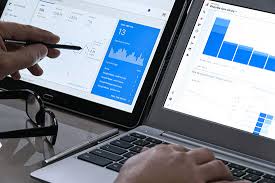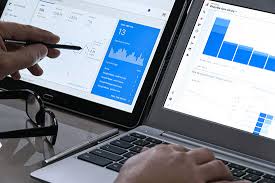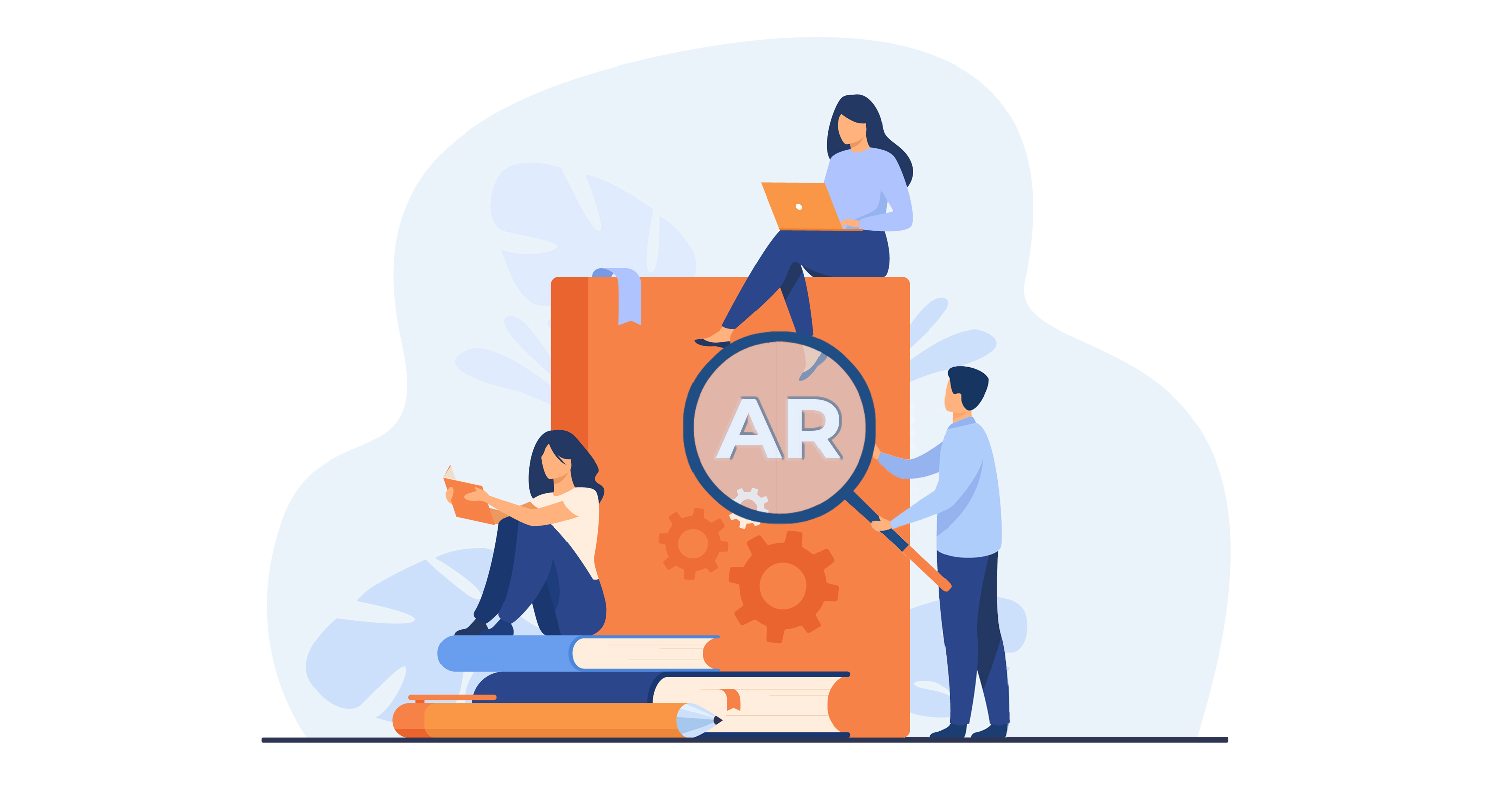Lots of businesses today face challenges around eCommerce bounce rate. After landing on your site, visitors only stay a few seconds and then exit without clicking through to another page on your site. High bounce rate leads to low conversion rates, meaning fewer sales. Here’s the essential information you need to know about bounce rate, along with tips to reduce it and keep the visitors on your eCommerce site, which is where you want them to be.
What is Bounce Rate?
Since Google Analytics (GA) is by far the most popular web analytics engine, Google’s definition of bounce rate is the most useful for most businesses.
Google’s explanations, though, are kind of dry and technically complex. On its own support site for GA, Google first defines a bounce as “a single-page session on your site.” Google then goes on to add, however, that a bounce is calculated in GA as “a session that triggers only a single request to the Analytics server, such as when a user opens a single page on your site and then exits without triggering any other requests to the Analytics server during that session.”
The bounce rate, then, amounts to:
“Single-page sessions divided by all sessions, or the percentage of all sessions on your site in which users viewed only a single page and triggered only a single request to the Analytics server.”
Google says.
But huh? How’s that again?
What does Google’s definition mean to your business, in practical terms? Well basically, any visitor who goes to a website and leaves without clicking through to other pages on the site has bounced. Then, for every 100 visitors to the site, the number that bounces amounts to the bounce rate, notes e-commerce expert Ajeet Khurana.
So let’s say 1,000 visitors land on your e-commerce website on a given day, and 583 of them leave without clicking through to any other page on your site. Your bounce rate will then add up to 58.3 percent, or (583 / 1000) x 100.

What’s the Average eCommerce Bounce Rate for 2019?
For some types of websites, such as blog sites, bounce rate might not matter all that much. Most people get to a blog by clicking through from social media. After reading the blog and learning some new information, the user goes right back to the social media site.
Yet as Google itself points out, “If the success of your site depends on users viewing more than one page, then, yes, a high bounce rate is bad.”
If a visitor lands on a product page on your web site, what you do want is for the shopper to interact with your site by clicking through to other pages and triggering events. What you don’t want is for visitors to do any of these things:
- Click the browser back button
- Enter a new URL in the address bar
- Close the browser window or tab
- Stay inactive for more than 30 minutes, so that the web session times out
Ideally, the shopper purchases your product right away by pressing the “buy” button, or at least adds the product to a shopping cart. In any case, you can prevent them from making an immediate exit by encouraging them to access other pages on your site and keeping them engaged with the site.

By creating a so-called “sticky” website like this, you can also entice visitors to continue going back to your site. On a second or third visit, a visitor is probably more likely to buy your products.
Bounce rate varies around many different criteria.
- For instance, according to data collected by Customedia Labs, it’s common for bounce rate to be higher among new visitors. A return visitor is already familiar with a website and has a different purpose in mind for going there.
- The type of industry matters, too. According to Google’s own numbers, there’s a 20 point spread between food and drink sites, at the high end of bounce rate, and real estate sites, at the low end.
- Structural differences could be one reason for the disparity in bounce rate between industries, as some see it. While most restaurant websites are simple, real estate sites often consist of many different pages showing different properties and spurring visitors to browse the site instead of leaving.
Overall, the most recent data shows the average eCommerce bounce rate at 45.68%, notes Fadiyan Sameh, a content marketing specialist at Personalization.com.
“When a visitor lands on your site, your primary objective is to keep the bounce rate as low as possible. Remember that bounce rates of more than 50 percent can negatively impact your conversion rates. At the end of the day, your end result should be a sale, and if that’s not happening, it’s time to analyze why.”
Sameh suggests.
How to Reduce High Bounce Rate?
eCommerce sites can turn visitors “on” or “off” for any number of reasons. Here are the best practices for lowering the bounce rate on your eCommerce site, drawn from research and recommendations by many experts in this area.

Streamline website design and layout
- Focus your site clearly on selling your products. Product descriptions should be lively but also highly readable and informative. Make essential information easy to find. If you don’t already have a great site-search engine, put one in place. The search bar needs to be big enough. Use filters that are appropriate to your target customers and easy to use.
- An overly cluttered website is unappealing and ineffective. Distracting visitors with too many visuals and too much text lessens their attention spans and lowers your conversion rates. Offer high-quality detailed images of your products, taken from a variety of angles. Include plenty of white space between images and text.
- Excessive ads are another distraction. What’s more, Google lowers the search rankings of web pages that display too many ads above the fold.
Make sure that product pages are accurate and complete
- To promote readability, keep product listings on the short side. However, include all relevant product information, such as product name, SKU, price, and important product features. You can gain additional click throughs by adding links to product manuals and guides.
- Don’t neglect to use common keywords which a shopper might use to find your product through a web search engine.
- For the credibility of your business and eCommerce site, do all you can to avoid any mistakes in product descriptions. Include complete and accurate shipping information on the site, too.
Speed up your eCommerce site
- eCommerce users today are accustomed to high-performance websites. If your website is slow to load or unresponsive, you’ll lose business in a heartbeat. Many shoppers are likely to move over to competing eCommerce sites that are easier and more satisfying to use.
- In fact, according to research by Decibel Insights, slow loading sites have a 72 percent higher bounce rate than fast loaders and a 38 percent higher bounce rate than medium loaders. Fast-loading sites also rate high on search rankings.
- To speed up your site, you can use a CDN (Content Delivery Network), add better caching, and optimize imaging by using the best combination of image file format and compression. You might also look at getting a faster hosting provider.
Make safety a top priority
- In order to complete online purchases, eCommerce sites need to collect information from customers such as credit card and bank account details. In this age of rampant identity theft, however, many shoppers are understandably wary.
- Many shoppers will leave a website if they don’t see information on the site telling them that the site is secure.
To lessen their worries, be sure to display SSL (Secure Socket Layer) and trust seals prominently on your site.
Leverage smart personalization
- In a report issued in mid-2018, Gartner predicted that by 2020, “smart personalization engines used to recognize customer intent will enable digital businesses to increase their profits by up to 15 percent.” Gartner further forecasted that, also by that year, 25 percent of leading online sellers will have enabled this kind of first-generation “commerce that comes to you” capabilities.
- In a third prognostication, the high tech industry analyst group stated that, by 2022, at least five percent of digital commerce orders will be predicted and initiated by artificial intelligence (AI).
- You don’t have to wait a minute to start personalizing your content. A “you might also like” feature, which informs shoppers about products similar to the ones they’re browsing, can improve click through rates and increase engagement with your site, reducing bounces as a result. You can also adopt AI-enabled technologies which personalize email campaigns on the basis of a shopper’s previous purchases, online browsing history, and demographic information.
Make the best use of your CTAs (calls to action)
- CTAs should be clear and direct. They should not contain misleading information. Give them good visibility on the page.
- CTAs offering limited-time discounts can work very well on eCommerce websites. On the other hand, it’s also a great idea to aim CTAs at other areas of your site, such as blog articles targeted at meeting the interests of your customers.
- Your blog posts should also include links to additional content on the site, including relevant product pages.
Don’t forget about video
- Visitors make up their minds about whether to remain on an eCommerce site within the first few seconds. Videos can capture visitors’ attention even better than texts or even images.
- Videos are also very engaging. When buying products online, people like to view what they’ll be getting, see how it works, and hear other customers talking about it. According to marketing blog Hubspot, the majority of people already watch online videos every day, anyway.
- You can use a full-screen video as a background, add it next to your CTA, or provide customer testimonial videos. Spice up your videos with cool narrations, music, animation, and colors.
Introduce other interactive features, such as live chat and customer reviews
- Live chat offers visitors the chance to interact with company representatives in real time directly on eCommerce sites. Not only does it reduce bounce rate, increase engagement, and boost conversions, it also leads to return visits. In a study by Bold Software, a maker of live chat software, 63 percent of respondents said they were more likely to return to the website due to the chat feature, and 38 percent said they had made their purchases because of a chat session. Send a chat invitation as soon as possible after a visitor arrives at your site.
- Customer reviews are another excellent tool for reducing bounce rate and raising conversion rates. Many users like to click through to read other customers’ experiences with a product and see how the product has gotten rated. Shoppers also enjoy engaging with eCommerce sites by writing their own reviews and bestowing their own ratings.
Consider adding AR (augmented reality) to your eCommerce site
- Augmented Reality is one of the hottest new technologies for keeping customers on your site. Unlike virtual reality (VR), which calls for a completely immersive experience that shuts out the real world, AR adds digital elements to the real world view. One very well known example of AR is the game Pokemon Go, which layers Pokemon graphics over the physical view.
- AR increases engagement and stops bounce by introducing unparalleled levels of personalization. AR can be performed on a computer, smartphone, or a special device such as Google Glass. The technology is already being used within sites and apps for letting people try on makeup and experiment with how various home furnishings and paint colors would work in their homes, for instance.
- Businesses now taking advantage of AR in eCommerce include big names like Ikea, Sephora, and Benjamin Moore. The use of AR in eCommerce is expected to widen out amazingly. There may soon come a day, for example, when shoppers will be able to view how articles of clothing would look on them in real life. If you start exploring AR right away, you could be one step ahead of the competition in your industry.







